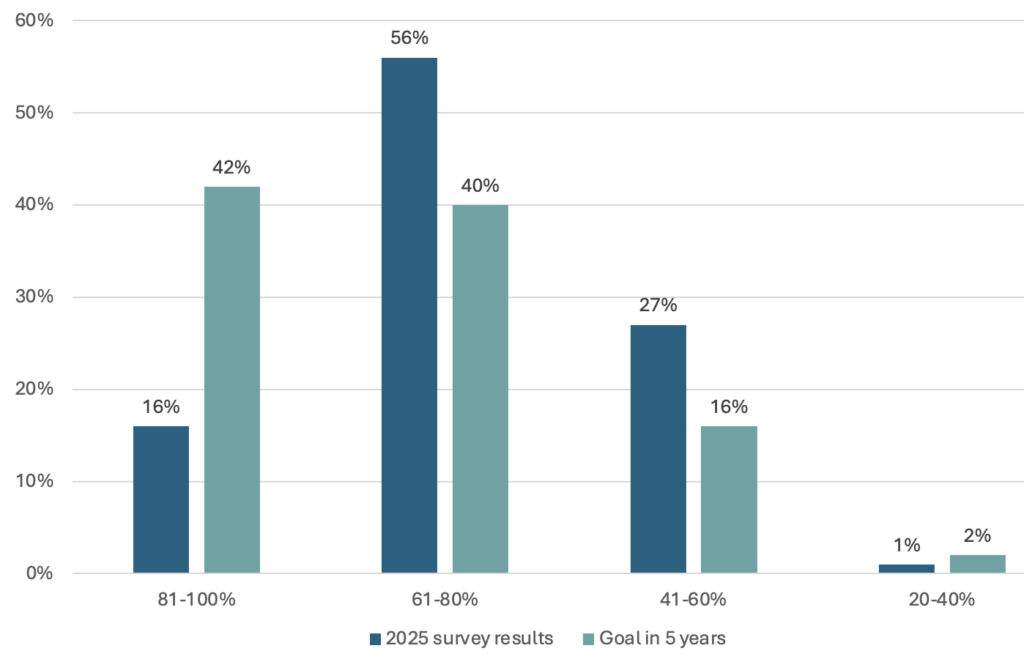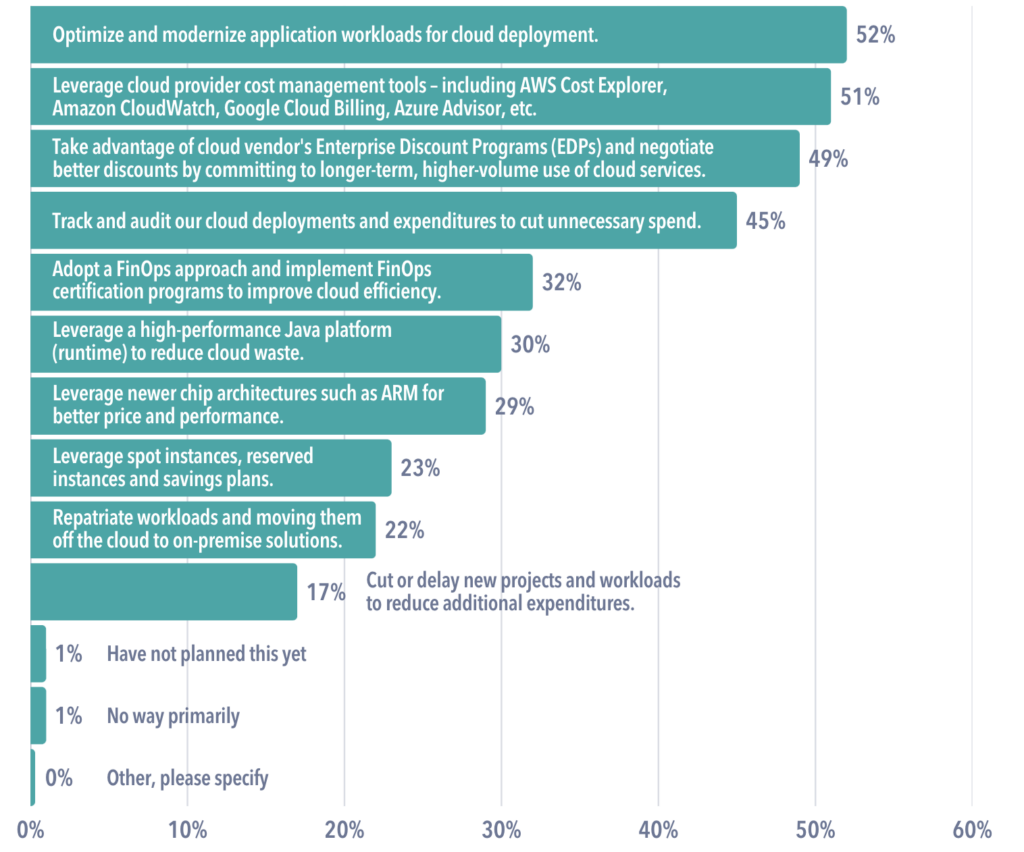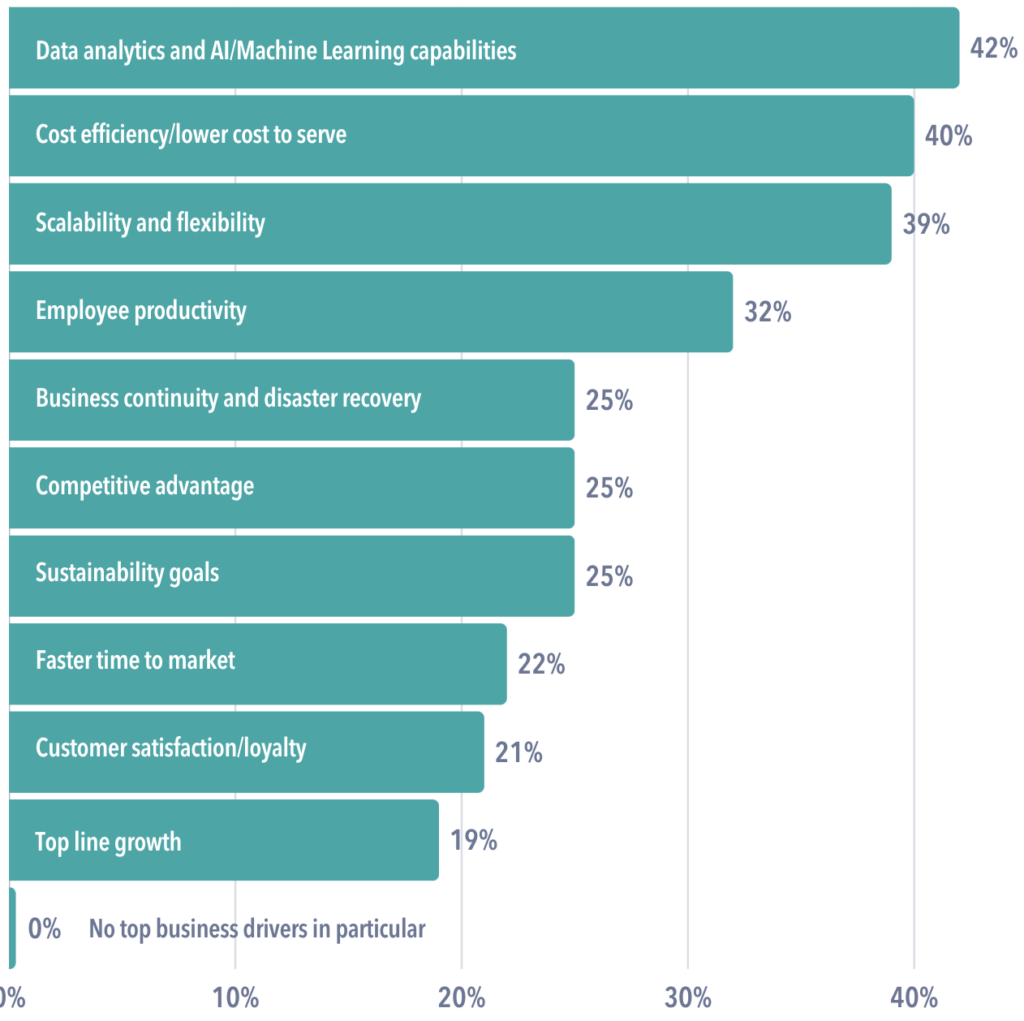
In a new CIO survey of 300 participants, 83% spend more on their cloud infrastructure and applications than they anticipated. Only 2% said that their spending was under budget. While leadership recognizes the cloud’s transformative potential and the cost savings it can deliver, the pressure to control expenses is rising.
The CIO role has evolved from “keeping the lights on” in traditional infrastructures to more strategic responsibilities for innovation, digital transformation, and growth.
A new Azul survey of 300 CIOs, The CIO Cloud Trends Survey & Report found that CIOs are spending more on their cloud infrastructure and applications than anticipated as they continue to grapple with their new responsibilities.
CIOs face external and internal pressures
Expanding their use of cloud infrastructure has become a cost management challenge for CIOs. 83% of survey participants said their infrastructure and application cloud spend is more than they anticipated. On average, CIOs said their actual infrastructure and application cloud spend is 30% over their anticipated cloud spend, and only 2% of CIOs said their cloud spend is under what they anticipated.
How does your actual infrastructure and application cloud spend compare to your anticipated cloud spend?

Company leadership is noticing. 43% of survey participants said their organization’s CEO and/or board of directors have concerns about their cloud spend. Despite these concerns, 56% of CIOs say their leadership supports current spending levels and would approve further increases.
Even with leadership support, some CIOs might be challenged to continue growing their cloud footprint. 27% of CEOs and boards require favorable market conditions to expand their cloud footprint while 9% are unwilling to approve additional expenses at all.
Still, 80% of CIOs surveyed see cost savings from their cloud infrastructure and applications.
Cloud migration is accelerating
For CIOs with more cost-averse leadership teams, conflict could lie ahead because CIOs want to increase their cloud spend over the next five years. Organizations have made cloud adoption a core component of IT strategy, and that trend is only accelerating. In keeping with CIOs’ more strategic role, they are looking to increase cloud adoption even more over the next five years and they will need to focus on strategies to optimize resources, improve efficiency and control expenses.
What percentage of your company’s infrastructure and application workloads are currently in the cloud (public, private, hybrid) and what percentage are you aiming to be in the cloud (public, private, hybrid) within five years?

CIOs Implement Strategic Cost Management Approaches
CIOs are increasingly expected to be revenue generators rather than cost centers (Forbes 2024). As cloud spending outpaces forecasts, survey participants are adapting their strategic approach. Strategies like optimizing and modernizing application workloads for cloud deployment, tracking and auditing cloud deployments, and adopting a FinOps approach are making long-term financial impacts [Figure 3].
How are you primarily planning to manage your cloud cost next year, if any way? Select up to four.

AI/ML capabilities drive cloud adoption
The primary business drivers for migrating workloads to the cloud include cost efficiency, scalability and flexibility, and employee productivity. But the leading driver for migrating workloads to the cloud is data analytics and AI/Machine Learning capabilities, selected by 42% of participants. Other factors are competitive advantage, sustainability, and faster time to market [Figure 4].
What are/would be your top business drivers for moving workloads to the cloud, if any? Select up to 3.

Company size influences the relative importance of some of these factors, with larger organizations (1,000-5,000 employees) favoring cost efficiency/lower cost to serve as the top driver over CIOs at smaller companies (500-999 employees). Similarly, CIOs at larger organizations cited employee productivity over those at smaller companies. These differences highlight how organizational scale and priorities influence cloud adoption strategies, with larger companies placing greater emphasis on cost efficiency and workforce enablement.
CIOs are likely to increase more cloud migration
CIOs are paying attention to cost efficiency and competitive pressures (Figure 4), which is what their CEOs and boards of directors want. With CIOs seeing the value of their cloud investments, their leadership teams are likely to see it too. All that being the case, companies will keep accelerating their move to the cloud—because in today’s market, staying competitive depends on it.
As CIOs accept the responsibility of generating revenue instead of just keeping the lights on, they will have more incentive to invest in the cloud. Their new roles as corporate visionaries will increase their spending on AI/ML capabilities as well.
Read the full CIO Cloud Trends Survey & Report on our website today.



